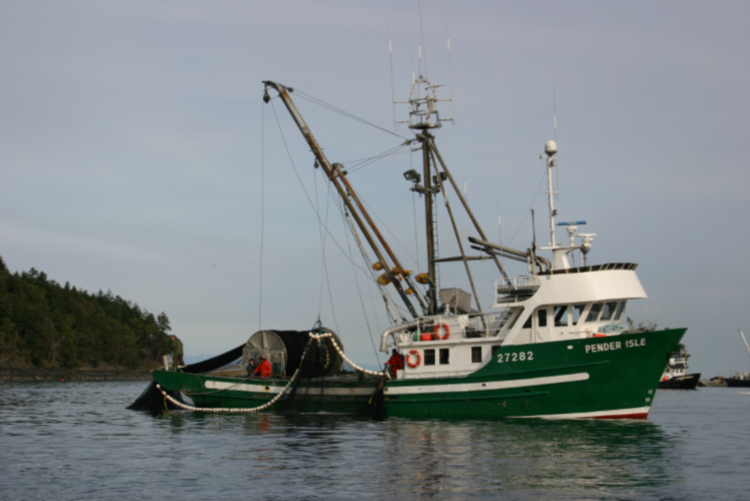WorkSafeBC prevention officers visit herring fishery crews to look at PPE, worker supervision, safe work procedures, and other risk-reduction tactics.

Photo credit: Fish Safe BC, used with permission
Commercial fishing continues to have one of the highest fatality rates, per capita, of industries in B.C. At the start of this year’s herring fishery, WorkSafeBC prevention officers are visiting crews to review employers’ safety management systems and to ensure controls are in place to protect workers.
“We want to ensure that fisheries are being proactive about reducing risks on the water,” says Patrick Olsen, a manager in Prevention Field Services. “Fishermen should ensure they address the risks associated with the particular fishery they are engaged in, and specific to the vessel they are on.”
Officers are looking at three main issues contributing to the high number of serious injuries and work-related deaths in the fishing industry: vessel stability, the effects of cold-water immersion, and lack of emergency preparedness. For example, here are just a few of the questions they are asking:
- Are emergency procedures in place?
- Are workers properly trained and supervised?
- Are there Safe Work Procedures (SWP) in place for various tasks?
- Is proper personal protective equipment (PPE) available, and is it being used?
For more information, see my post Working with herring roe fishing crews to keep safety afloat.
Different solutions for different marine operations
Recently I spoke with Ryan Ford, the program manager of Fish Safe. He described the different types of risks faced by workers in B.C.’s major fisheries.
He says one example is that workers in seine fishing need hearing protection due to a higher incidence of noise-induced hearing loss. Workers in the trawl fishery need to prevent injuries in fish hold areas where they are at risk of being struck by blocks of frozen fish. They need to secure objects and equipment that could fall or shift suddenly — especially during rough weather — to prevent these injuries.
“It’s really important for vessel masters and crew to understand the kinds of risks that exist within their workplaces — and then work to try to prevent them,” Ryan says. “If you work in a certain industry, you need to know the types of injuries that commonly occur. Then learn what you can do to prevent them.”
See this new series of fishing gear videos and information pages from Fish Safe that show B.C.’s six major fisheries categories, their most common injuries, and best practices for safety.
The best way to address risk is to conduct a risk assessment to identify the hazards and put controls in place to protect workers. For more information, see Assessing risks from WorkSafeBC. Also see WorkSafeBC’s commercial fishing webpage for more information and resources.


